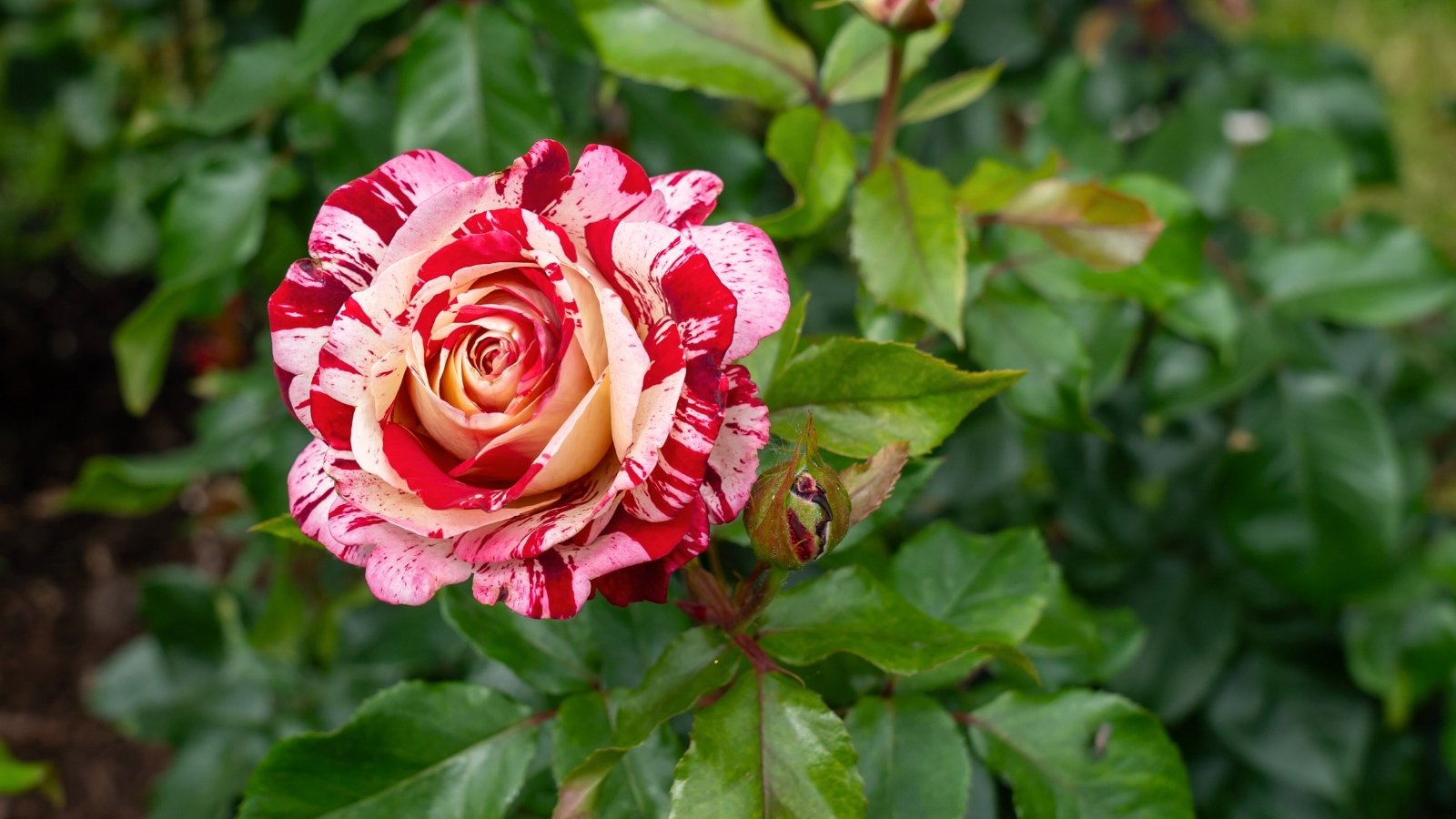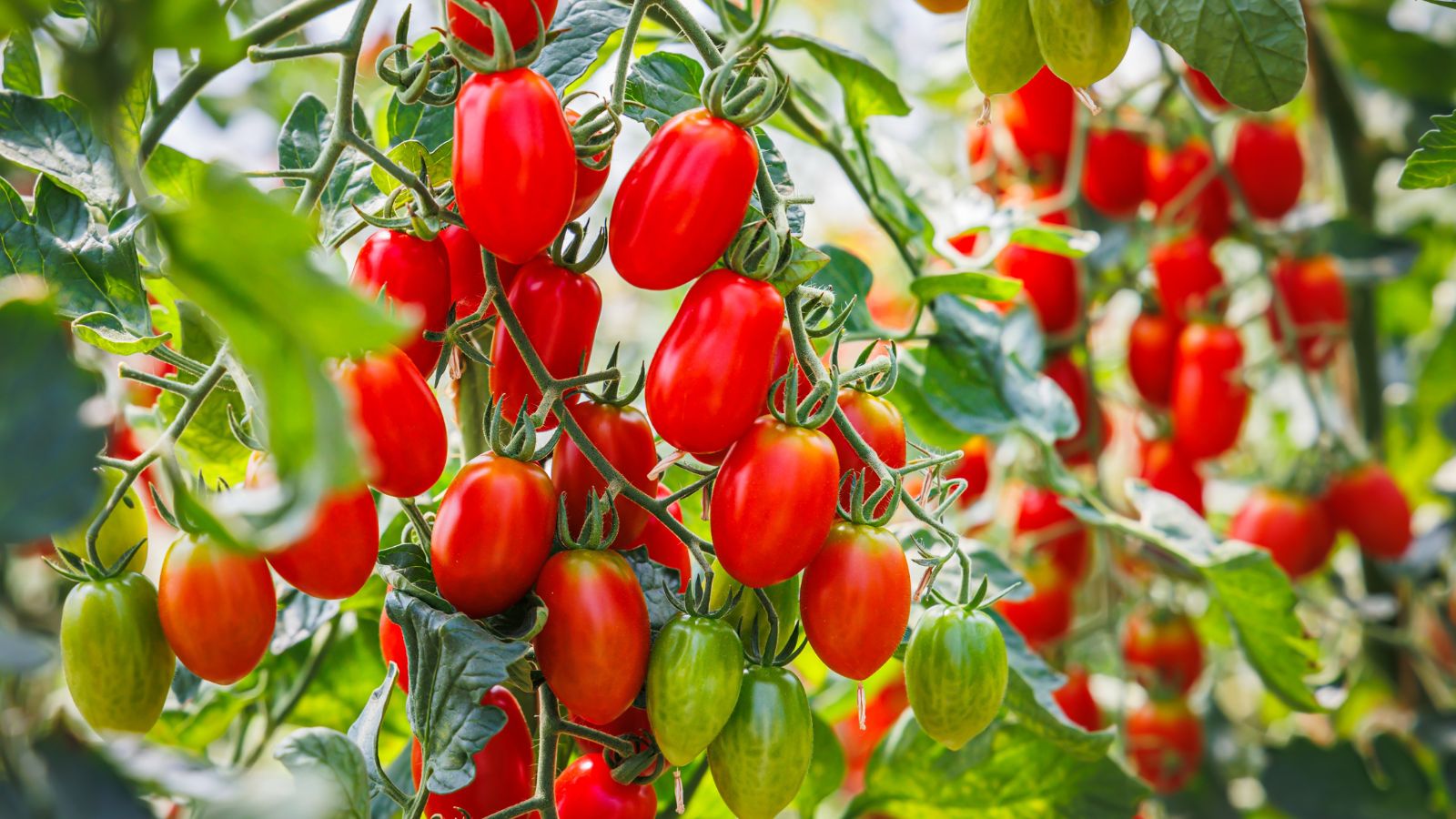11 Taste-Test Winning Tomato Varieties to Plant in June

With summer rounding the corner, our heat-loving crops are ready to take off. The tastiest tomatoes to plant in June will steal the show in a couple of months. Transplanting (and even sowing this month in mild climates) gives them time to develop into juicy rounds, soon to be bursting at the seams. But to avoid literal bursting, pick them a little early to continue ripening off the vine. This saves them from cracking in the sun, filling with excess water, or being devoured by birds.
Many of us aren’t yet at the harvest stage in our tomato development, with cooler climates just coming out of chilly nighttime temperatures. Transplant tomato seedlings when air temperatures are above 45°F (7°C). In warm, frost-free zones, a successional round extends the harvest beyond the dog days of summer, with early fall being a productive time for fruiting.
From cherry to roma to beefsteak, determinate and indeterminate, we’ve lined up the best in flavor, backed by strong performance, for delicious, productive yields. With accolades in horticultural trials and taste tests, the tastiest tomatoes to plant in June will delight on the plate.
Mountain Merit Bush Tomato


Mountain Merit Bush Tomato Seeds
Sun Gold Pole Cherry Tomato


Sun Gold Pole Cherry Tomato Seeds
San Marzano Roma Pole Tomato


San Marzano Roma Pole Tomato Seeds
‘Sungold’


‘Sun Gold’ sets a high bar as one of the sweetest, juiciest cherry tomatoes. The beloved tomatoes are a favorite for their prolific fruits and deliciously sweet flavor, as well as their sunny color. All work together to convey the flavor of summer.
‘Sun Gold’ has thin skin, a firm texture, and a sugary flavor that makes them perfect for popping right off the vine. The Royal Horticultural Society Award of Garden Merit recipient resists Fusarium wilt and tobacco mosaic virus. The little, round drops of sunshine are early-maturing, ready in about 57 days from transplanting.
The one-inch globes resist splitting on indeterminate vines that yield about 120 tomatoes per plant. Clusters of cherries begin to ripen at the stem and progress to the lower fruits on the tips. The consecutive ripening spans a few days for continual picking. Once the clusters get going, the harvests continue weekly into fall.
‘Mountain Merit’


‘Mountain Merit’ is an All-America Selections award winner for its qualities as an all-around favorite, both in performance and as a slicer for fresh eating. Firm, bright red rounds weigh 8 to 10 ounces and boast superior flavor.
‘Mountain Merit’ has a compact, well-branched habit and doesn’t take up much growing room. It’s a fit for raised beds, containers, and small spaces. Aside from being one of the tastiest tomatoes to plant in June, it also has good resistance to common diseases like wilt and viruses.
‘Mountain Merit’ is ready in about 75 days. The fruits ripen over a four to five-week harvest period for enjoying fresh or canning.
‘Cherokee Purple’


‘Cherokee Purple’ is a prized heirloom and one of the best among beefsteaks, particularly purple beefsteaks. Fruits are shiny, dusky rose and purple with pinkish-red flesh. Large and juicy, they have a rich, sweet flavor with a slight smokiness. The rounds ripen mid-season after about 80 days and go through frost.
‘Cherokee Purple’ is a pre-1890 variety from Tennessee with ties to Cherokee Indian origin. When you grow an heirloom like this one, you capture a bit of our historic foodways blended with high flavor and good performance.
Many large heirlooms and beefsteaks are susceptible to cracking and defects due to their size, but ‘Cherokee Purple’ resists both. Vines are productive and reliable with a hearty yield of 10-12 ounce fruits.
‘San Marzano’


‘San Marzano’ tomatoes are a top, and maybe even the best, paste tomato. The plums carry a robust and complex flavor. Originally from southern Italy and prized for use in sauces, ‘San Marzano’ brings heirloom qualities of vigorous growth and exceptional flavor. The complex, rich taste is perfect for preserving, canning, and fresh eating.
True ‘San Marzanos’ originate in the Campania region of southern Italy, in the volcanically rich soils of Mount Vesuvius. The superior paste types are a prized export and protected under an official governmental convention, the Denominazione d’Origine Protetta, or Protected Designation of Origin. This designation protects significant foods and foodways of Italian origin.
‘San Marzano’ yields long, narrow, pointed plum tomatoes, growing in clusters of six to eight. They’re large for paste tomatoes, with each oblong weighing about five to six ounces and growing three to four inches long. ‘San Marzanos’ are sweet with low acidity. They have less water and seeds than other plums, making them meaty, thick, and ideal for pasting.
In addition to their delicious flavor, ‘San Marzano’ tomatoes are vigorous, indeterminate growers that produce all season. With good disease resistance, the vines resist fusarium and verticillium wilts. As productive fruiters, ‘San Marzano’ needs a large tomato cage or staking/trellising for best growth and support.
‘Brandywine’


‘Brandywine’ is a classic beefsteak and the epitome of the summer slicer. These are the big, juicy rounds we envision when it comes to old-fashioned varieties loved in the garden and the kitchen. The well-regarded Amish heirlooms are renowned for their flavor and large fruits. The original ‘Brandywine’ is pink, while other strains are deep red, yellow, and orange.
‘Brandywine’ has an exceptional flavor that’s rich, sweet, and slightly spicy—a gold standard for other tomatoes. It suits fresh eating as well as canning, roasting, and saucing.
‘Brandywine’ is an indeterminate, setting and ripening in succession late in the season (taking up to 100 days to develop). Vines benefit from staking, caging, or trellising for support. The hefty fruits grow up to a pound and are ready to harvest in mid to late summer.
‘Black Cherry’


‘Black Cherry’ is an often-winner of taste tests. It bears purple-black fruits with dark interiors and is a “true black” cherry tomato. The perfect little rounds boast a layered flavor characteristic of purple varieties—fruity, sweet, and rich.
The one-inch fruits develop generous clusters throughout the season, beginning about 75 days after transplanting. Combine them with red and yellow cherries for a beautiful summer salad. Like most cherry tomatoes, they’re also delicious for snacking right off the vine.
‘Glacier’


‘Glacier’ is an early-bearing dwarf variety with one of the sweetest flavors among the early producers. Two-inch, bright golden-red fruits emerge extra early and produce successionally throughout the season. The Swedish variety withstands cool spring temperatures better than most.
‘Glacier’ is semi-indeterminate with more compact stems, but long enough to benefit from support. The chill-tolerant selection may withstand a light frost and is a good pick for areas with short growing seasons.
‘Supremo’


‘Supremo’ is a bush hybrid that yields extra-large romas or saladettes, over three inches long and two inches wide. The early-producing paste tomatoes are perfect to plant in June, yielding tasty fresh (Caprese-salad-worthy) fruits to be canned or sauced in late summer. Thick walls offer a long-lasting shelf life for the determinate variety that produces all at once.
‘Supremo’ produces uniform fruits reliably. Not only juicy and a go-to for fresh salsas and salads, but they also have high disease resistance and heat tolerance. They set fruit well in hot temperatures and tolerate cool ones, too.
With a spread of 18 inches, the productive vines are ideal for growing in containers or small spaces across various summer climates. Sow a successional round to yield multiple roma harvests.
‘Chocolate Cherry’


Thin-skinned and juicy, ‘Chocolate Cherry’ is among the most flavorful and sweetest of the cherry types. With unique coloration and bite-size appeal, the sugary, one-inch cherry tomatoes ripen to purplish-red. They develop in prolific clusters of six to eight on tall vines.
‘Chocolate Cherry’ is one of the tastiest tomatoes to plant in June and frequently tops personal favorites lists. It also has added health benefits: purple tomatoes contain anthocyanin pigments that make them dark. These are the same healthy antioxidants in blueberries. Tomatoes also contain the antioxidant lycopene.
‘Chocolate Cherry’ resists cracking, but they’re just as tasty picked early and allowed to ripen indoors.
‘Purple Zebra’


‘Purple Zebra’ is an award-winner with purple-red fruits and green striping. This 2022 All-America Selections recipient bears three- to four-ounce round fruits with deep reddish mahogany interiors. A muddied appearance sometimes occurs in dark varieties, but not with ‘Purple Zebra,’ whose coloration remains distinct.
‘Purple Zebra’ has a rich, sweet, and complex flavor with low acidity and a moderately firm texture. In addition to the striking tomatoes, they have exceptional disease resistance and performance, but with better flavor and thinner skin than other highly disease-resistant selections.
The indeterminate vines require staking for best development. Look to ‘Green Zebra’ for a true green variety, even when fully ripe.
‘Black Krim’


‘Black Krim’ was the first commercially available “black” tomato. The heirloom is notable for its unique coloration, weighty fruits, and sweet, slightly salty taste. This strong, early performer yields slicers in rich rose and deep purple. Depending on weather conditions, they ripen to deep purple or dusky rose. In cool climates, the large tomatoes ripen to dusky rose and chocolate with green shoulders. They’ll turn deep purple-black in more sun and heat, but the sweet and salty flavor remains.
The beautiful beefsteaks have dark flesh with deep, juicy interiors and balanced flavor. ‘Black Krim’ is a selection in Krymsk, Russia, on the Black Sea across from the Crimean Peninsula. It fruits reliably, with meaty tomatoes that weigh 10 to 12 ounces each.
‘Black Krim’ tomatoes mature late in the season, 70 to 90 days after transplanting, meaning a June planting will bear fruit around mid-September. With the tall, continually growing vines, this variety needs a large tomato cage, stake, or trellis for support.



